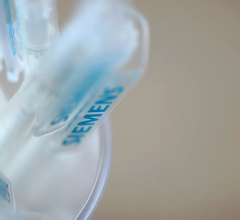
Implicity provides a remote cardiac monitoring and research platform used by Independent Diagnostic Testing Facilities and medical centers to deliver high-quality care for patients with connected cardiac devices. On this platform, Implicity aggregates, normalizes and standardizes data from any implantable cardiac device across all manufacturers.
With 1.2 to 1.4 million new electrophysiology (EP) devices being prescribed to patients around the world each year, cardiac implantable electronic devices (CIEDs) remote monitoring has become the standard of care for those living with a variety of cardiac health conditions.[1] Using data collected by the devices, physicians can help improve both patient survival rates and their quality of life.
But challenges exist when that data goes missing or delayed should the device stop accurately transmitting crucial cardiac information. It then falls to clinical staff to take time away from direct patient care to reach out to patients to determine why the data is no longer transmitting.
The Rise of CIEDs and Remote Care During COVID-19
CIEDs encompass a variety of different electronic devices; these include antibradycardia pacemakers, implantable cardioverter-defibrillators, cardiac resynchronization therapy and loop recorders. Such devices help treat and oversee slow heart rhythm, atrial fibrillation, manage prior cardiac arrest or syncope, or otherwise prevent cardiac incidents in those at high risk of cardiac arrest or heart failure.
The results of a 2018 survey published in EP Europace showed that prior to the COVID-19 pandemic, 83 percent of patients followed up with physicians in face-to-face visits, while only 17 percent followed up remotely.[2] With the explosion of telehealth visits following the crisis, experts agree the use of remote monitoring will not only continue but is likely to increase in years to come. As a result, remote transmission of cardiac data will remain a priority moving forward.
The Data Flow Dilemma When CIED Transmissions Are Interrupted
CIEDs operate just like a small computer to collect heart rate information and work to correct heart rhythm disorders, such as arrhythmias. An implantable cardioverter defibrillator (ICD), for example, will deliver an electric therapy to the heart to help control and restore normal heart rates.
When the transmission of data from these devices is seamless, healthcare providers can keep a close eye on their patients’ cardiac health and how well the CIEDs are working. This helps healthcare teams to provide better and more efficient medical care while giving patients quicker cardiac care when needed while avoiding or reducing hospital stays related to cardiac rhythm disorders. Ultimately, this saves healthcare costs and improves patient quality of life. Compared with the standard follow-up through in-office visits, remote monitoring is associated with a reduced mortality of 38% per year.[3]
Currently, each CIED manufacturer use a different interface to collect such data and indicate notification alerts for when problems arise. While device manufacturers do provide technical support for patients in case a problem arises, they do not proactively reach out to them when a disconnection occurs. Notable, however, is that no alert is sent to the device medical team as soon as patient device stops transmitting information for any number of reasons. As a result, around 19% of patients are not transmitting and 70% of the medical centers count at least 10% of non-transmitting patients.[4]
This can happen for any number of reasons, such as if the device stops working or a patient simply forgets to plug in the transmitter or leaves the device at home while on vacation, etc.
Regardless, when the flow of data is interrupted or stops, it is up to the provider’s office to figure out the cause and to follow up accordingly. Care teams must spend time tracking down the patient via phone or mail, which can be time consuming and difficult. Some patients can be hard to reach or locate, which may also prolong the time it takes to determine if remote monitoring of the CIED needs to be disabled (e.g. if the patient has been admitted to a long-term care facility or is no longer a part of the provider’s practice area.)
Mounting Provider Concerns and the How to Cope With CIED Device Data
Ensuring connectivity to remote monitors and transmitters is a key component to optimal follow-up. It is also one of the major pain points for device clinics. Cardiac device teams are experiencing higher workloads due to the growing volume of monitored patients. They need to cope with the device data deluge, keep up with documentation, manage alerts filtering, scheduling, billing, team coordination, technical issues and most importantly, provide best quality care for in-clinic patients. Managing disconnected patients adds up to their very heavy workload and consumes an important portion of their time which can be devoted to treating patients in need.
When data ceases transmitting from a patient’s CIED, it is impossible for providers to give the best medical care. What’ more, it can complicate billing processes for the provider’s office. In the U.S., remote monitoring is typically billed on a 30 day basis, which means patient disconnects can lead to a missed billing cycle and significantly impact clinic revenue.
Addressing CIED Monitoring Issues With High Provider and Enhanced Workflows
The key to successful and effective cardiac remote monitoring is selecting the right solution or platform to help manage cardiac data and enhance remote care workflows. An application that allows patients to be informed when the devices is no longer transmitting and through which they can communicate the reason behind the disconnection to the medical team (vacation, technical issue, etc.) would significantly improve patient adherence and make him or her part of the care workflow.
Technology providers should work side by side with clinics and cardiologists, providing them with solutions that simplify their workflow instead of complicating it. Patient education is a key component to enable optimal patient care. Communicating on the benefits of remote monitoring for patients with cardiac implants and encouraging patient to keep their devices transmitting is key. Technology can improve this communication via patient-friendly tools (apps) and encourage patient engagement in follow-up.
In addition, when patients are more invested in ensuring that their devices continue to transmit data effectively and without interruption, they too can be more aware of when and how quickly that data continues to flow uninterrupted where it needs to go, so that patient care and patient quality of life can remain high.
About the author: Arnaud Rosier, M.D., is an electrophysiologist with a Ph.D. in health informatics, and the CEO and co-founder of the company Implicity. His second doctorate was co-directed by Pr. Anita Burgun and Pr. Philippe Mabo at INSERM laboratories. Both of them still collaborate with Implicity and are members of the scientific advisory board. Following positive results in remote monitoring automation, Arnaud created Implicity in 2016 to fully optimize remote monitoring and improve patient care outcomes. With 15 years of experience in cardiac electrophysiology and 12 years in artificial intelligence and knowledge engineering applied to health, Arnaud is the author of a dozen international publications in peer-reviewed journals, notably on telecardiology and AI supporting medical decisions. Arnaud is also an angel investor of digital health companies including Cardiologs, Lifen, Ambuliz, Biloba etc.
Related EP Remote Monitoring Content:
VIDEO: Rising Interest in Remote Monitoring of EP Devices in the COVID-19 Era — Interview with Robert Kowal, M.D.
Find more EP Lab news and video
References:
4. Internal data provided by Implicity


 November 14, 2025
November 14, 2025 









